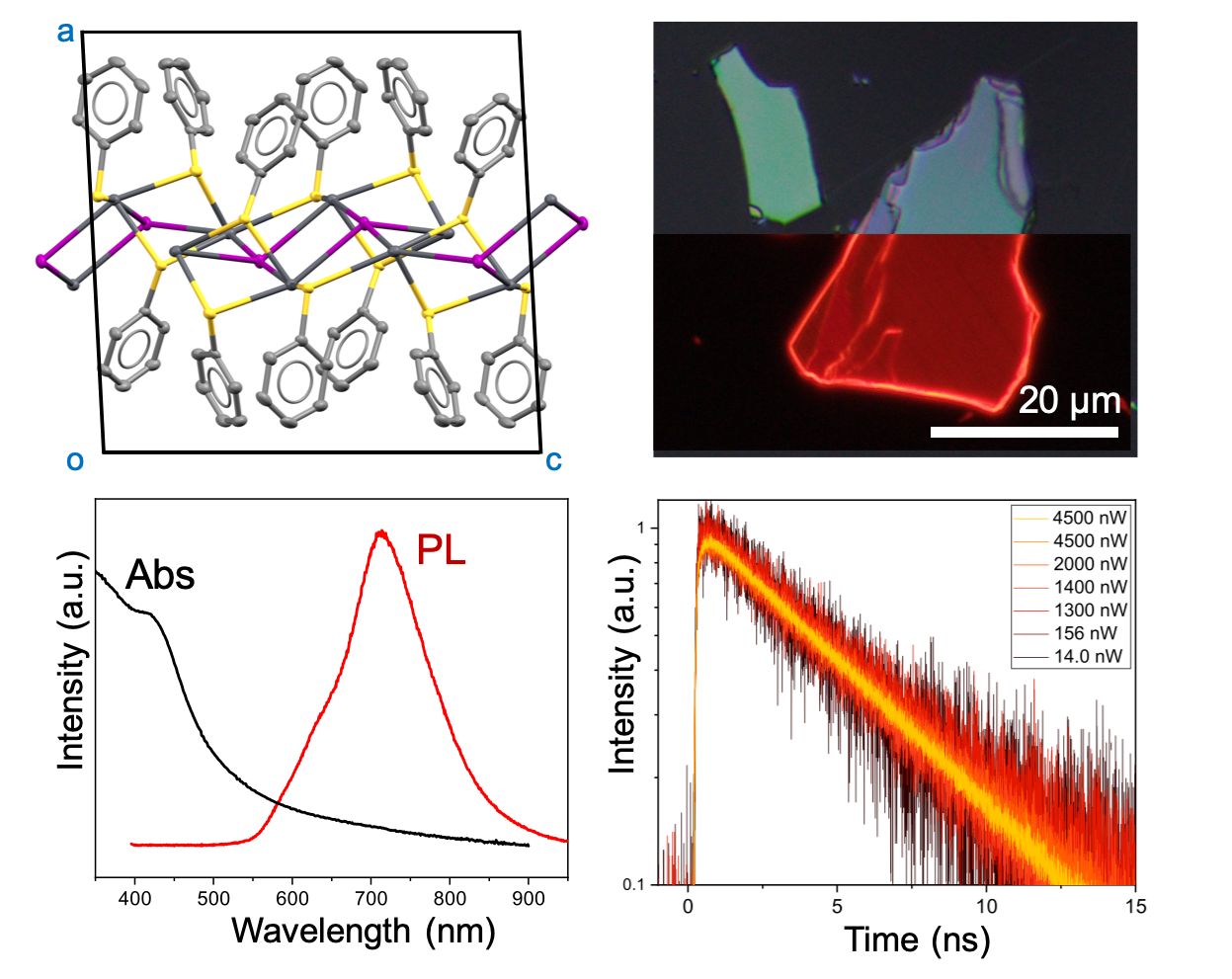(660i) Structural Tunability and Diversity of Two-Dimensional Lead Halide Benzenethiolate
AIChE Annual Meeting
2020
2020 Virtual AIChE Annual Meeting
Materials Engineering and Sciences Division
Synthesis and Application of Inorganic Materials II: Application/Separations
Friday, November 20, 2020 - 10:00am to 10:15am
Two-dimensional (2D) materials have been of interest to several different fields including energy storage, energy generation, and photonic studies. Many 2D materials that exhibit optical and electronic properties such as graphene, transition metal dichalcogenides (TMDs) feature inorganic components, and thusly are limited in modification and tunability. The answer to this lies in being able to incorporate organic moieties with inorganic materials in order to make hybrid materials that have the strong optoelectronic properties typically associated with inorganics, with the tunability that organics offer. Although 2D materials based on both halides and chalcogenides have been explored extensively, the combination of these anionic species in a single solid-state material has not been fully explored with the properties of this mixed anion semiconductors not known. Inspired by recent developments of solution-processed hybrid lead halide perovskites we seek to better understand the incorporation of π-conjugated organic building blocks into the lead-halide crystal lattices with a covalent thiolate linkage. In order to realize this, we sought to incorporate a rather simple thiol HS-C6H5 into the lead-halide system. In this, we synthesized a new type of halide-organothiolate-mixed 2D hybrid material, Pb2X(S-C6H5)3, where X is a halide (I, Br, or Cl). These materials are different from conventional lead-based 2D materials as they feature unusual 5-coordinated lead centers with a stereochemically active electron lone pair on the lead atoms and 4-coordinated iodine atoms. Optoelectronically, the Pb2X(S-C6H5)3 family feature an indirect band gap, strongly emission with an extremely large Stokes Shift. Curiously, the optical band gap of these materials can be tuned through halide variation, however the photoluminescence is less sensitive to composition. The emission is likely to be dominated by lead-sulfur lattice interactions or the lead lone-pair electrons. Another 2D material was also obtained by variation of precursor ratios and has the form. This compound features a remarkably similar structure to PbI2 and has similar electronic properties. The system of Pb(S-C6H5)2, Pb2I(S-C6H5)3, PbI1.5(S-C6H5)0.5, and PbI2 compounds provide new fundamental insights into the role of organothiolates in modulating the structures and optoelectronic properties of lead-based compounds.
